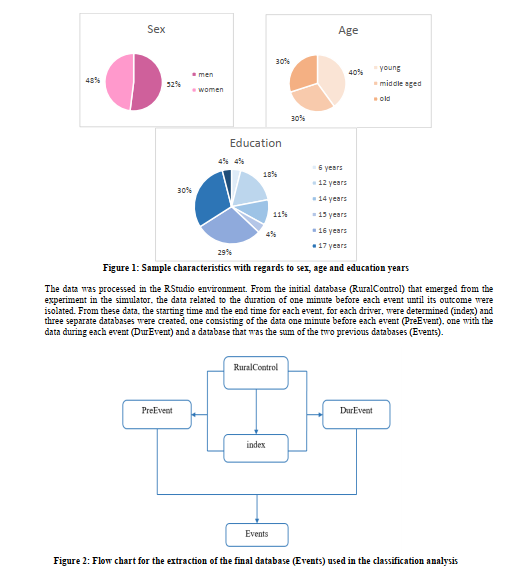
The aim of this paper is to identify events based on driving characteristics on rural roads and determine the main factors that can describe the situation before and during an event. The data used were collected from a driving simulator experiment in rural roads. Data analysis was performed using advanced statistical models and more specifically binomial logistic regression, random forests, as well as factor analysis. The models were applied on two different variable sets: i) the whole set of independent variables and ii) the four most important independent variables after the application of a feature selection algorithm. Results showed that the random forest model performed much better than the binomial logistic regression in identifying event occurrence with very few false alarms, in both variants. Speed and time to collision along with total distance driven from the beginning of the driving session, turned out to better describe the case of driving one minute prior to an event. Driving during an event can be sufficiently described through speed, the deviation of the vehicle from the middle of the road as well as time headway. In terms of data describing the situation one minute prior of each event, these are better expressed through speed, time headway the deviation from the median and the total distance driven. Nevertheless, a larger sample of drivers and a naturalistic driving dataset could offer better results in the future
| ID | pc460 |
| Presentation | |
| Full Text | |
| Tags |







